DRAW - Working From Your Window
Posted by Cass Art on 25th Mar 2020
When we are stuck indoors, it can seem like our options for things to draw are limited. However, many everyday subjects can be rich with inspiration. Window views are ever changing, and can be used in a variety of ways. There's the view from the window itself, but we can also make the window the focus of an interior scene.
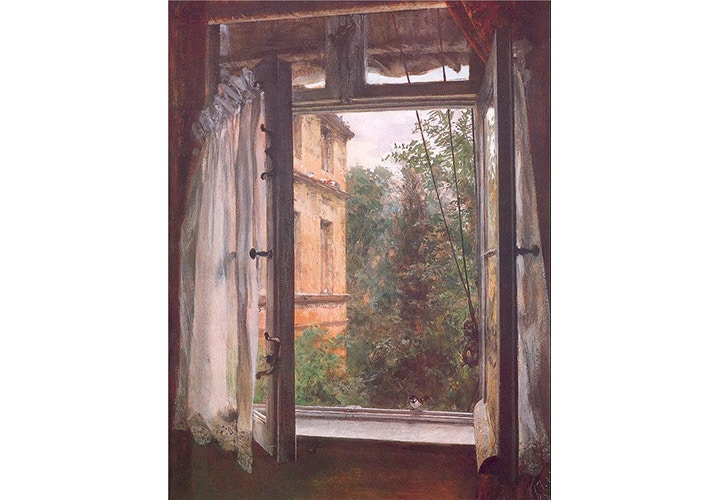
Adolph Menzel - 'View from a Window in the Marienstrasse' Window views bridge the gap between landscapes and townscapes, and interior views, creating a subgenre of their very own.
Ideas for Drawing from Your Window
The most obvious approach is drawing the view from the window. This can be an attractive option with a rural view, but crowded townscapes can make interesting drawings too.
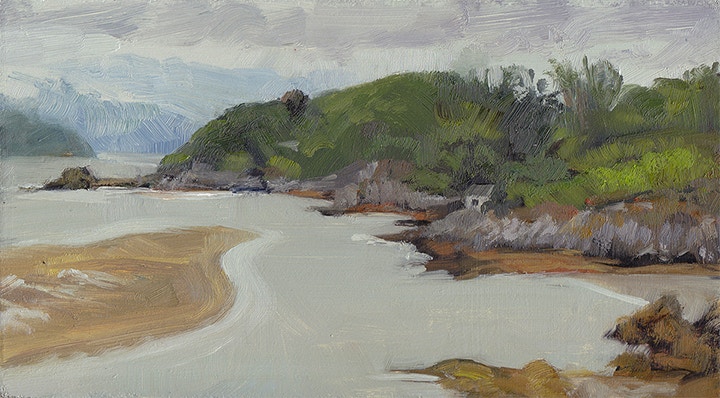
I painted this view from the window when visiting Draw's Mawddach Cresent location in Wales, after plans for a day of plein air painting were scuppered by heavy wind and rain.
Whilst including everything is a fun challenge, it is fine to be selective as well. One option is to pick a subject out of the scene that interests you - a study of that one particular tree or building?
Another way to select is to pay attention to composition and design. Here are a few suggestions to help you crop down the wider scene:
Do you want more sky, or more land? Clouds, with ever shifting patterns and colours, are an almost inexhaustible subject, and you can opt to let them dominate the composition, or even go the route of making a skyscape, and leave out the land entirely.
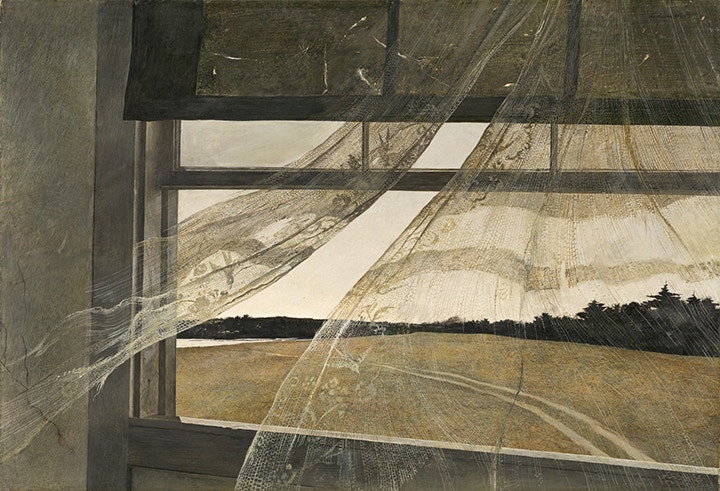 I needed to race to draw these swift-moving clouds as they passed my window.
I needed to race to draw these swift-moving clouds as they passed my window.
What do you want to focus on, and how can you use the surroundings to emphasise your subject?
Break things up unevenly – the above cloud study, land, clouds, and empty sky take up different ratios of the page.
How can you portray depth? Is there a near, mid ground and distant element in the image?
The Window Motif
If we start to think of the window as our subject, this opens up possibilities of interior and still life set ups. Perhaps you only to include the window frame or part of it, still giving dominance to the scene outside.

Andrew Wyeth – 'Wind from the Sea'
The next step is the fuzzy boundary of interior and still life painting, as we expand our frame to include part of the room surrounding the window. Unlike landscapes, you have control over the interior aspect of the composition, so you may want to arrange props or subjects that harmonise with the scene outside.
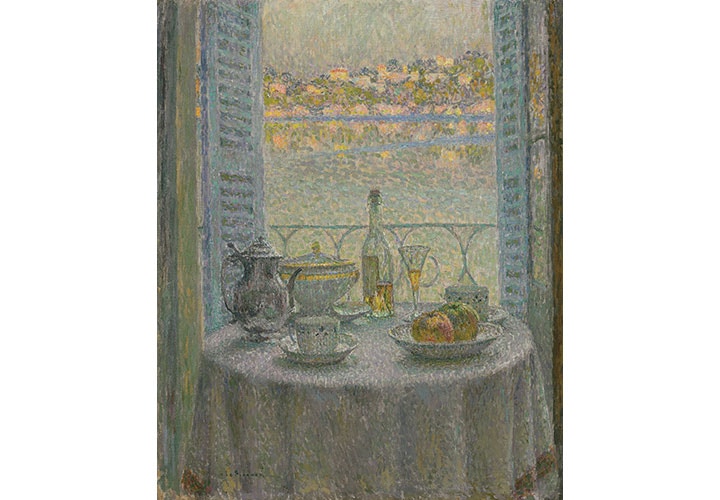
Henri le Sidaner – 'La Table Ronde' Sidaner created a number of paintings featuring views through windows and doors as a subject, or key element.
Tips and Tricks
- If you are drawing a larger scene, it is a good idea to first identify your biggest object, and place it in your drawing. This helps scale everything else against that, and means your drawing is less likely to spill off the page.
- Rough out the contents of the scene early on – even if it is just loose boxes for buildings, and blobs for trees, you can arrange subjects in a busy scene quickly. Don't be afraid to adjust these as the drawing progresses.
- When laying out your drawing, aside from working big to small, it can also help to work near to far – 'drawing into the page'. This helps because subjects closest to you are overlapping distant ones. These overlaps add a greater sense of depth to your drawing.
- Save the details until last! Details are always a temptation as our eyes focus on something and we struggle to pull away as we keep drawing. Keep thinking about working 'big to small'!
Over to You: Framed Drawing from Your Window
This exercise is for you to do at home!
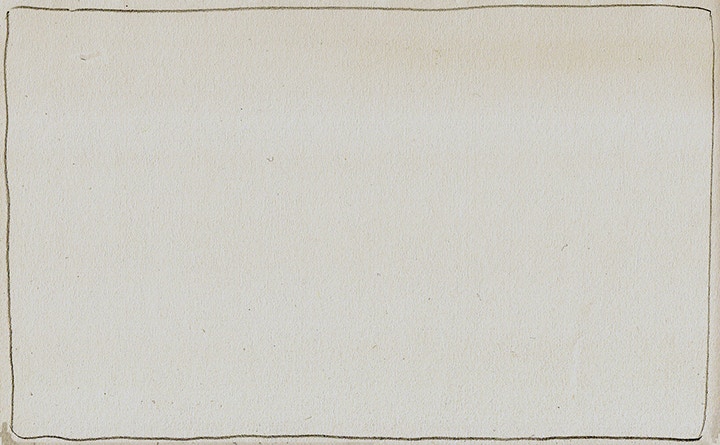 STEP 1
STEP 1
Start by drawing a frame – you can fill the whole page, or create a format of your choice. It need not match your window. Don't neglect this – it really helps you scale different objects!
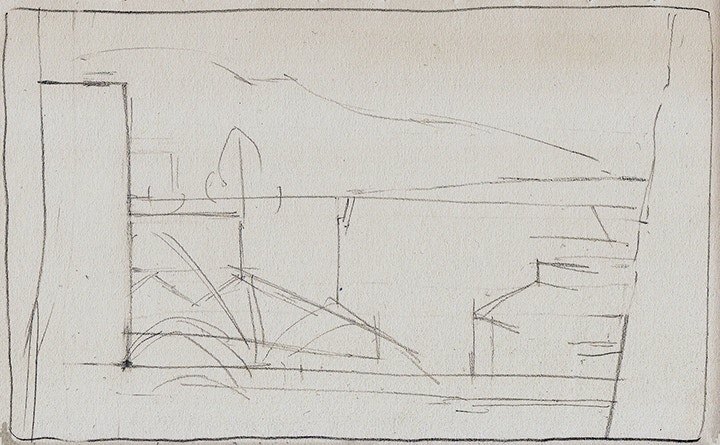
STEP 2
How far you are going to pull back – do you want to look at the view outside, or do you want to include the window? Start laying in the shapes of the largest objects in the scene. If you include the window, do that first.
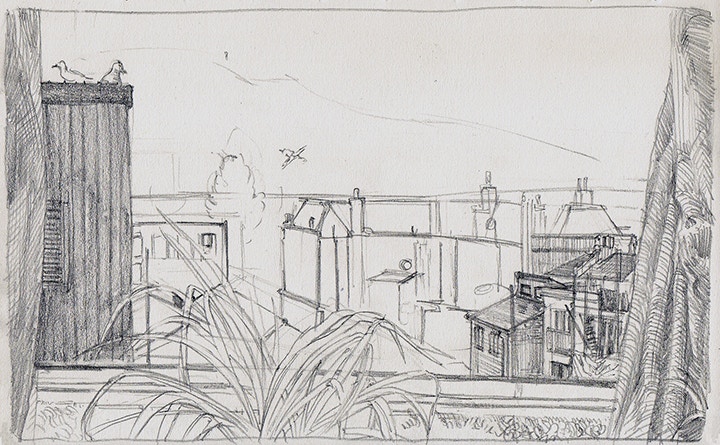
STEP 3
Start working into the scene, going from nearby subjects to more distant ones. This usually involves working from the bottom, and edges of your drawing into the middle. Here I've needed to adjust the size and shape of some of the buildings in the centre too.
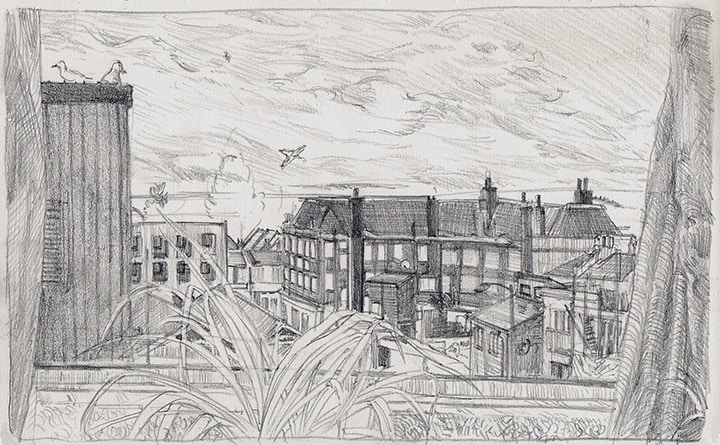
STEP 4
Here I'm working further into the scene – I've also blocked in the clouds. Sometimes it can help to draw the sky early. It is often the lightest tonal area, and that helps with making comparisons to other light objects, such as white buildings.
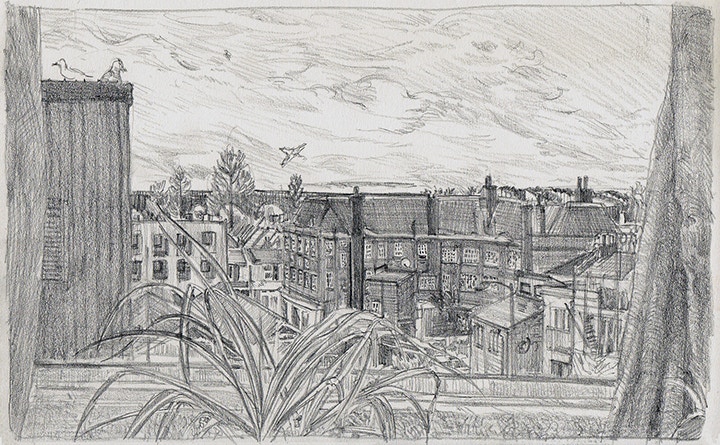
STEP 5
You can keep building up detail as far as you like. If you work from large shapes to small details, you'll be surprised how little it matters if you miss the odd window or bush.
By Lancelot Richardson
These articles have been commissioned by Draw using the Draw Patreon, set up to provide tutors and life models at Draw with ongoing work during the cover-19 pandemic. Supporters to the Patreon receive regular life drawing and portrait refernce to draw from alongside weekly drawing articles on drawing from home.
Feeling Inspired?
Shop online for everything you'll need. Don't forget to hashtag #cassart on social media to show us your creations.



